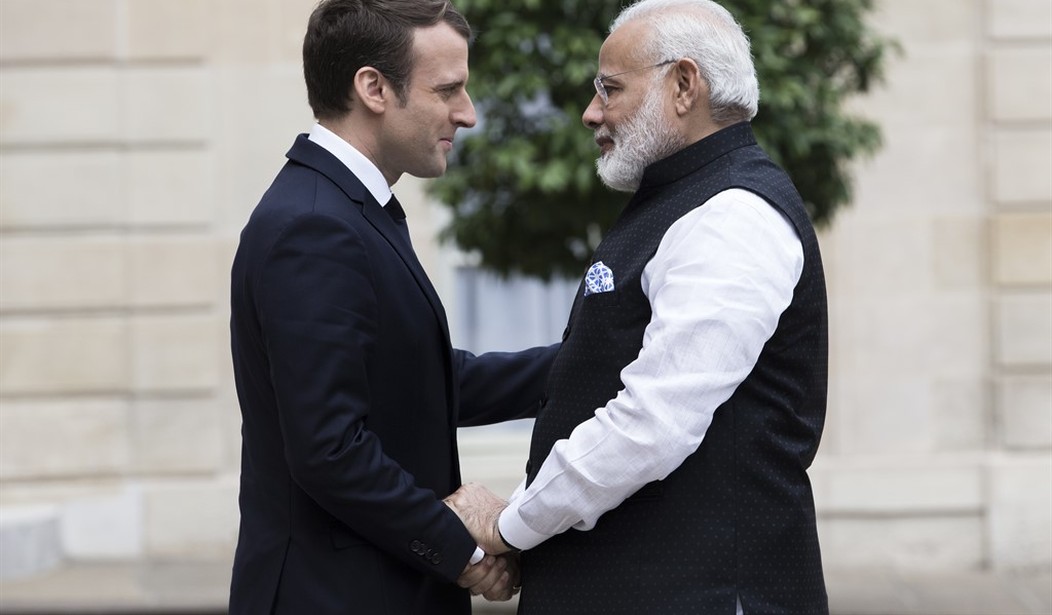There’s a lot of handwringing on both sides of the aisle over whether President Donald Trump made the right decision to pull the U.S. out of the Paris Agreement. Potential California gubernatorial candidate Tom Steyer needlessly bloviated Trump committed “assault and battery” on American’s future. The Federalist’s David Harsanyi opined the withdrawal proved once and for all the Democrats have lost on climate change. Both sides appear to believe the Paris Agreement was voluntary, because of how politicians have portrayed it.
They’re both wrong.
The fact is the Paris Agreement is a treaty, and the U.S. was never ever a part of it. The theory was originally put forth by Eugene Kontorovich at The Volokh Conspiracy, pointing out the U.S. was the only nation to join the agreement via executive order.
Countries seem invariably to have accepted the agreement as a treaty that requires going through their internal treaty-ratification processes, typically submission to the legislature. Countries from the United Kingdom to China to Jamaica have ratified it through their legislatures. So has Brazil, Japan, the Philippines and Australia. In the latter, the question of whether it was a binding international accord requiring submission to Parliament received some discussion, and a parliamentary analysis concluded it was a “major treaty” that needed to be submitted.
This means going back and looking at the language of the agreement. Voluntary is found five times in the agreement, all in Articles 6 and 9. The key uses have to do with international transfer mitigation outcomes.
1. Parties recognize that some Parties choose to pursue voluntary cooperation in the implementation of their nationally determined contributions to allow for higher ambition in their mitigation and adaptation actions and to promote sustainable development and environmental integrity.
3. The use of internationally transferred mitigation outcomes to achieve nationally determined contributions under this Agreement shall be voluntary and authorized by participating Parties.
The World Bank suggested those mitigation outcomes had to do with financing and shouldn’t be compared to carbon markets, which doesn’t really explain why the agreement is voluntary. It’s possible most people are getting the idea it’s voluntary under Article 6, Section 4.
4. A mechanism to contribute to the mitigation of greenhouse gas emissions and support sustainable development is hereby established under the authority and guidance of the Conference of the Parties serving as the meeting of the Parties to this Agreement for use by Parties on a voluntary basis. It shall be supervised by a body designated by the Conference of the Parties serving as the meeting of the Parties to this Agreement…
It does seem voluntary, but it’s very important to look at State Department guidelines when it comes to non-binding agreements (emphasis mine).
• With respect to the title of a non-binding document, negotiators should avoid using the terms “treaty” or “agreement.” While the use of a title such as “Memorandum of Understanding” is common for non-binding documents, we caution that simply calling a document a “Memorandum of Understanding” does not automatically denote for the United States that the document is non-binding under international law. The United States has entered into MOU’s that we consider to be binding international agreements.
• We advise negotiators to avoid using the term “Parties” in non-binding documents. Rather, we encourage the use of other terms such as “Participants.”
• With respect to the actions to be taken, we advise that negotiators avoid terms such as “shall”, “agree”, or “undertake.” In many cases, we have urged that terms such as “should” or “intend to” or “expect to” be utilized in a non-binding document.
All of these terms are used in the Paris Agreement, going against the idea it’s actually voluntary for the U.S.. This puts it under the purview of a treaty, meaning any action on the Paris Agreement has to be done by the Senate, not by executive order. Even former President Barack Obama’s executive order is rather vague on whether the U.S. was voluntarily entering the agreement, focusing more on the fact China and the U.S. were doing the agreement, and not that it was voluntary. Obama’s executive order on the joining of the agreement never mentioned it was voluntary.
It's official: the US has joined the #ParisAgreement pic.twitter.com/qYN1iRzSJk
— Brian Deese NARA (@Deese44) September 3, 2016
There are people out there saying Paris Agreement is non-binding, the language and State Department guidelines appear to suggest otherwise, and reinforce the idea it’s a treaty. This requires a Senate vote, and why Obama and Trump’s action on “entering” and “exiting” the agreement are disappointing. Two wrongs do not make a right, and both presidents engaged in executive overreach to accomplish their goals. My opposition to Trump’s announcement has nothing to do with whether I believe the state should mandate carbon emissions and global warming legislation (it shouldn’t), but everything to do with wanting to see the Constitution followed. Article 2, Section 2 of the Constitution is explicit in the proper policy:
[The President] shall have Power, by and with the Advice and Consent of the Senate, to make Treaties, provided two thirds of the Senators present concur…
What Trump should have done was said he wanted the Senate to vote on the Paris Agreement because it’s a treaty. That would have ended the political fight right there, even though there’s no guarantee the Senate would have authorized the agreement. All Trump did, much like Obama beforehand, was encourage the idea of presidents using their “pen and phone” to make decisions for the Senate.








Join the conversation as a VIP Member